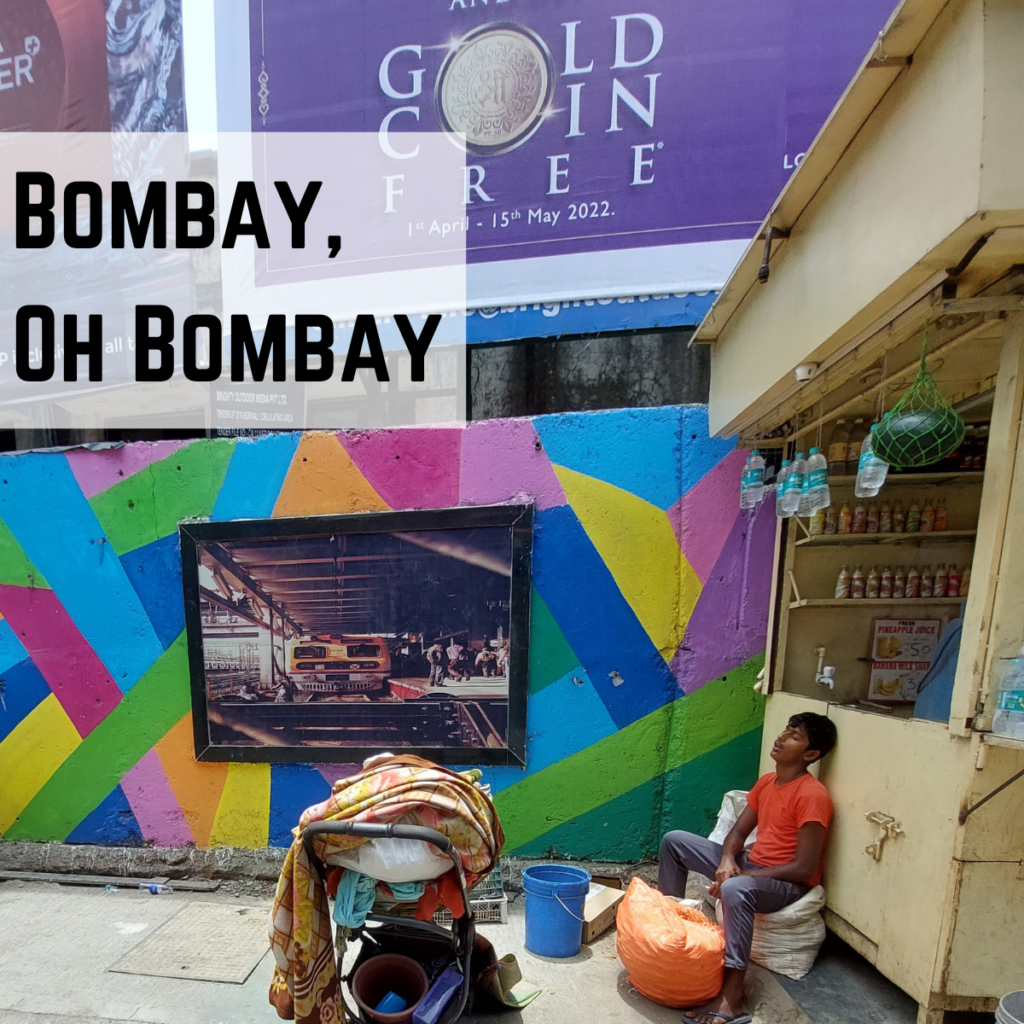The city of Bombay, now Mumbai, has always fascinated artists, writers, filmmakers and now Instagram reel makers. The sights and smells play an important part in their creations. The social fabric is both a source of inspiration as well as curious exploration. The dialect – the Bambaiyya, a hotchpotch of Marathi, Hindi, Gujarati, Urdu, English best understood contextually than literally – continues to be an essential part of the Mumbai experience. She wears many hats – the city of dreams, the city that never sleeps, the city with a resilient spirit, the city that does not let you sleep hungry, the city of impossibilities.

Why does this happen? What is so special about the city that continues to attract thousands each day to her shores.
You either get it or you don’t. For those of us — who grew up in the city, we share an emotional bond with her. But for many others, they don’t understand this fanboyism. They have some good reasons for it. Cost of living for one. When I moved to Bangalore, I could make a choice to stay close to my workplace in an affordable location nearby. Back home that would be unimaginable. As the months passed the contrasts became more apparent – While B’luru is both a genteel, welcoming city – getting around the city can be a pain. You can’t simply hail an auto or switch between BMTC bus routes which lack last mile connectivity like the BEST buses. The people are welcoming and with their swalpa adjust maadi attitude they are also quite accommodating of migrants.
Bombay though welcoming, on the other hand is always pulsating with raw energy, she is an untameable beast. Owning a piece of land in Bombay is a lifelong endeavour for many. Making it big in Bombay means you have made it big in life. But that’s the beauty and bane of the city. The wheel of hustle never stops running. It is like running on a treadmill of hope and desire. And now with the uneven infrastructure boom underway in the city, owning a piece of land is going to become even more expensive.
On my recent visit, I found the city to be in a state of flux. The coastal road construction has begun and parts of the sea-facing neighbourhoods are covered under scaffolds and large machines. Metro construction is underway at various locations. And many old building complexes are being torn down to build high rises. The usual summer breeze, synonymous with May afternoons had disappeared and a very perceptible heat-dome effect was at play. The green cover is shrinking and so are the open spaces where we could play cricket once upon a time.
Living long term in the city seems quite unsustainable except for those who own houses in apartment complexes. The yawning gap between the rich and the poor is alarming. The Slum Rehabilitation Authority (SRA) is moving at a glacial speed on slum development projects. Whereas, the old private co-operative housing societies are transforming into big towers at a much faster pace under the Redevelopment Schemes. This causes the median multiple – the affordability index to go haywire. Which means that very few people can afford a house as price of property zooms past the average household income.
This obviously creates a nudge effect for migrants to consider moving out of the city or to far flung areas and suffer daily commutes to downtown. In the monsoons the commute – both by road and rail becomes tedious and tiresome. On other days the rush hour crowd and traffic make it difficult.
This brings us to the original point. Is the Bombay charm eroding? Even though bits and pieces of nostalgia are being packaged into commodities and sold off with the Bombay insignia. This perverse romanticisation of the city, an activity which even I am guilty of, takes away from the inequitable nature of development in the city. This makes me question whether the Bombay feeling is only a made up mirage to distract us from the core issues which seem to be piling on over the last few decades?
While the city undergoes many changes – the quintessential impatient nature of the city remains intact. I was happy to note that the same – khali peeli time khoti mat karo attitude of the denizens is still around. Which means things get done on time, work assignments are not delayed and business of every customer is almost always valued by shopkeepers – big or small.
A sense of customer centricity which is hard to find elsewhere is still quite thriving in the city. Which is perhaps the core essence of the city – the potential of possibilities. The possibility that with perseverance, effort and some daily hustle – one can make it no matter in what field. To retain this we need to fix the issues that face the city – mobility infrastructure, affordable housing and good jobs. Only then we can claim to have a world-class, inclusive city. A true city of dreams.